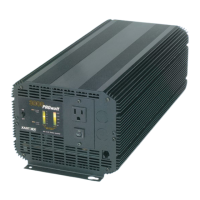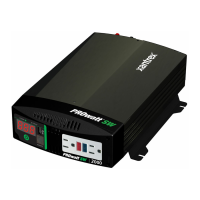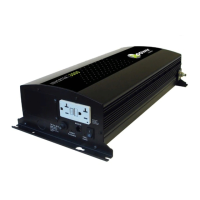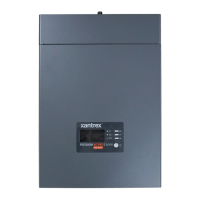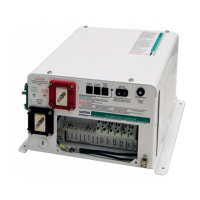PROSINE 2.0 INVERTER•CHARGER USER’S MANUAL
110
445-0089-01-01
Estimating Battery Requirements
To determine the proper battery bank size, you need to compute the number of
amp-hours that will be used between charging cycles. When the required amp-
hours are known, size the batteries at approximately twice this amount.
Doubling the expected amp-hour usage ensures that the batteries will not be
overly discharged and extends battery life. To compute total amp-hour usage,
the amp-hour requirements of each appliance that is to be used can be
determined and then added together, or the watt-hours can be totaled and
converted to amp-hours.
Start with the nameplate ratings of your appliances. If the wattage is marked
on the appliance, you can use that number directly; otherwise, multiply the
marked voltage and amperage: WATTS = VOLTS X AMPS. Once you know
the AC wattage drawn from the inverter, multiply that by the length of time the
appliance will be used to determine the energy the load will require: WATT-
HOURS = WATTS X HOURS. You can then convert this to an estimate of the
battery amp-hours that the appliance requires:
BATTERY AMP-HOURS USED = AC WATT-HOURS / 10 (for a 12-volt
battery)
—or—
BATTERY AMP-HOURS USED = AC WATT-HOURS / 20 (for a 24-volt
battery)
For example, a 100W light bulb that is used for 4 hours will use 400 watt-
hours (Wh) and the inverter will consume approximately 40Ah from a 12V
battery, or 20Ah from a 24V battery.
Another useful rule of thumb is that the current drawn from the battery can be
estimated from the AC output watts by using these same factors (10 for 12V
systems, 20 for 24V systems). For example, when running an 800W
microwave oven, the inverter will draw approximately 800 divided by 10 =
80A from a 12V battery.
Motors are normally marked with their running current rather than their
starting current. Starting current may be three to six times running current.
The manufacturer’s literature may provide more accurate information than the
motor nameplate. If large motors will be started, you may need to increase the
battery size to allow for the high start-up demand.

